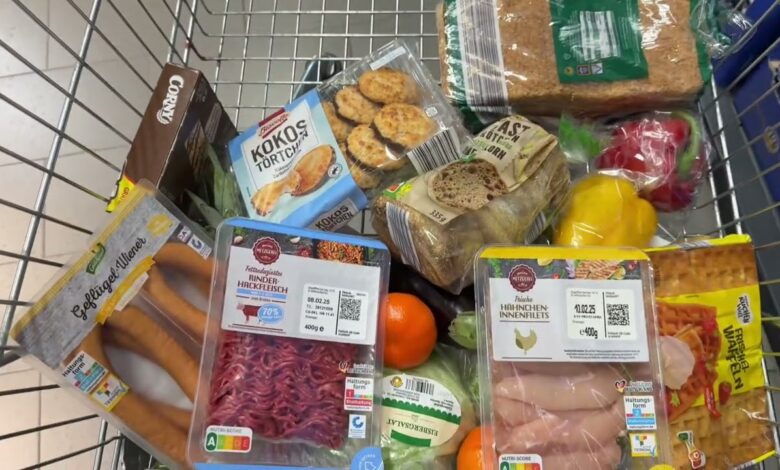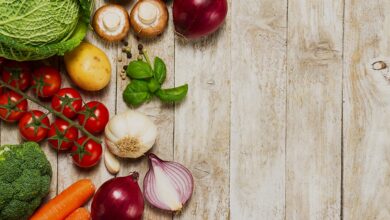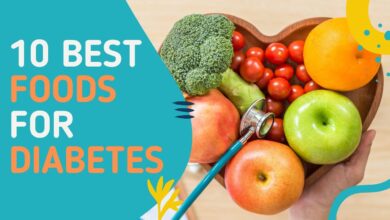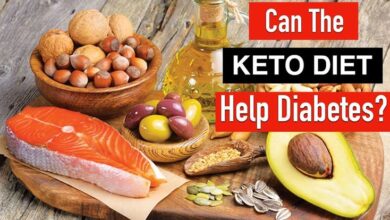
Starting the ketogenic lifestyle can feel like learning a new language. Suddenly, foods you thought were “healthy” are off the table, while butter, bacon, and avocados are celebrated. If you’re just starting out, walking into a supermarket without a clear plan is like entering a maze. Every aisle tempts you with flashy labels, low-fat slogans, and “healthy” cereals that don’t fit the keto approach. Without guidance, beginners often grab foods that unknowingly sabotage their progress, either knocking them out of ketosis or stalling their weight loss journey.
That’s why having a Keto Food Shopping Guide is a game-changer. It takes away the guesswork, eliminates decision fatigue, and gives you confidence that everything in your basket supports your health goals. Think of it as a personal trainer for your grocery cart—it directs your focus, saves you money, and helps you avoid common rookie mistakes. More importantly, a grocery list tailored to keto keeps you motivated. When you see your kitchen filled with keto-friendly ingredients, you’re less likely to slip back into carb-heavy habits. Whether you live in Lagos, Johannesburg, or Berlin, these principles work everywhere, and with the right approach, keto shopping becomes second nature.
Check Also Lazy Keto Meals for Beginners: Quick, No-Cook Low-Carb Recipes for Weight Loss
Why a Keto Grocery List Matters for Beginners
One of the biggest challenges for beginners is the myth that keto equals endless bacon and cheese. While those foods can be part of the diet, keto is about far more than indulgence. The ketogenic diet is structured around a delicate balance—high-quality fats, moderate protein, and low-carb vegetables. Without a proper grocery list, you risk creating meals that are lopsided, nutrient-deficient, or even too high in carbs to maintain ketosis.
Another reason a grocery list matters is hidden carbs. Did you know that many sauces, salad dressings, or even “healthy” granola bars contain enough sugar to undo your progress? Without a checklist, you might fall victim to clever marketing, loading up on foods labeled “natural” or “low-fat,” which usually means high in carbs. A grocery list eliminates this confusion. It guides you toward whole, nutrient-rich foods and helps you avoid processed traps.
Finally, a list also saves money. Many people complain keto is expensive, but in reality, poor planning makes it costly. A structured shopping guide allows you to buy in bulk, focus on essentials, and avoid overpriced “keto-branded” snacks. Over time, you’ll notice your budget stabilizing and your results improving.
Understanding the Basics of Keto Shopping
To shop keto successfully, you need to understand the macronutrient blueprint of the diet: approximately 70–75% fat, 20–25% protein, and 5–10% carbs. This ratio forces your body to switch from burning glucose to burning fat, producing ketones that fuel your brain and body. But here’s the tricky part—those carbs add up quickly if you’re not paying attention. For example, just one banana can take up your entire carb allowance for the day.
That’s where the grocery guide comes in. A good list focuses on whole foods rather than processed “keto” products. Why? Because whole foods like eggs, salmon, spinach, and avocados are naturally low in carbs and nutrient-rich, while many packaged items contain hidden fillers, preservatives, or artificial sweeteners that affect ketosis. Beginners should think of the grocery store as divided into zones: proteins, fats, vegetables, dairy, nuts, pantry staples, and beverages. If you stick to these zones and avoid the processed middle aisles, shopping becomes simpler.
Another key principle is regional adaptability. Whether you shop at a market in Accra, a supermarket in London, or a grocery store in Nairobi, the fundamentals remain the same—prioritize natural foods that fit your macros. The more you master these basics, the easier keto shopping becomes.
Keto Protein Essentials
Protein is essential, but unlike bodybuilding diets, keto doesn’t promote high-protein intake. Instead, it encourages moderation. Why? Because too much protein can be converted into glucose through gluconeogenesis, which may interfere with ketosis. That said, high-quality protein keeps you full, supports muscle repair, and fuels your body.
When shopping, go for fresh, unprocessed meats. Beef, lamb, chicken, and pork are excellent options. If your budget allows, choose grass-fed or free-range for higher nutrient quality. Seafood is another keto superstar—salmon, sardines, and mackerel not only deliver protein but are also rich in omega-3 fatty acids, which reduce inflammation and improve heart health. Eggs, meanwhile, are the ultimate keto staple: affordable, versatile, and packed with nutrients like choline and vitamin D.
Avoid processed meats like sausages, deli cuts, and hotdogs unless they’re specifically free of fillers and sugars. Many of these items contain breadcrumbs, corn syrup, or starch, which add unnecessary carbs. A safe rule of thumb is this: the fewer ingredients listed on the package, the better it is for keto.
Healthy Keto Fats: Your Main Fuel Source
Unlike most diets, keto thrives on fat. But it’s not about stuffing yourself with greasy fries—it’s about choosing healthy, nutrient-dense fats. These fats become your primary fuel source once your body adapts to ketosis.
The best fats include oils such as extra virgin olive oil, avocado oil, and coconut oil. These oils are stable for cooking and add flavor to salads and dressings. MCT oil (medium-chain triglycerides) is especially popular because it quickly converts into ketones, giving you a boost of energy. Grass-fed butter and ghee are also excellent choices—they’re rich in conjugated linoleic acid (CLA), which has fat-burning properties. Avocados deserve special mention: they’re loaded with potassium, fiber, and heart-healthy fats, making them perfect for beginners.
What should you avoid? Processed seed oils like soybean, canola, and sunflower. These oils are cheap but high in omega-6 fatty acids, which can cause inflammation when consumed excessively. Stick with traditional fats that have been used for centuries, and your body will thank you.
Low-Carb Vegetables: The Keto Superstars
Vegetables often confuse beginners because not all veggies are keto-friendly. The golden rule is: above-ground vegetables are usually low in carbs, while below-ground vegetables are often starchy and high in carbs.
Focus on leafy greens like spinach, kale, and arugula—they’re packed with fiber and vitamins. Cruciferous vegetables such as broccoli, cauliflower, and Brussels sprouts are also excellent. They’re low in carbs, high in fiber, and versatile for meal prep. Zucchini, cucumbers, and bell peppers add variety and crunch without kicking you out of ketosis.
What about carrots, corn, and potatoes? Unfortunately, they’re too high in starch to fit into keto macros. This doesn’t mean they’re unhealthy; it simply means they don’t align with your ketogenic goals. For beginners, it’s safer to stick with low-carb vegetables until you’ve mastered your carb limits.
Dairy on Keto: What’s In and What’s Out
Dairy can be a great ally in keto, but it can also stall progress if you overdo it. The trick is to choose high-fat, low-carb dairy options. Cheeses like cheddar, mozzarella, and brie are perfect—they add flavor, fat, and protein without many carbs. Heavy cream and sour cream are also keto-approved, especially for coffee or cooking.
Yogurt, however, is tricky. Many brands are loaded with sugar, even when labeled “healthy.” If you want yogurt, go for unsweetened Greek yogurt in moderation. Milk, on the other hand, is best avoided because of its high lactose (sugar) content. Instead, opt for almond or coconut milk (unsweetened).
A common mistake beginners make is assuming all dairy is keto-friendly. Skim milk and low-fat cheeses are not—they’re higher in sugar and lower in fat. Stick to full-fat options to keep your macros balanced.
Nuts and Seeds: Portable Keto Snacks
Nuts and seeds are lifesavers for keto beginners. They’re portable, satisfying, and packed with nutrients. However, not all nuts are created equal. Almonds, pecans, macadamia nuts, and walnuts are excellent—they’re low in carbs and high in healthy fats. Seeds like chia, flax, pumpkin, and sunflower are also fantastic. Keto Food Shopping Guide
But here’s the catch: nuts are calorie-dense, and it’s easy to overeat them. A handful is fine; a whole bag can stall your weight loss. Cashews and pistachios, for example, are higher in carbs, so they should be eaten sparingly.
When shopping, look for unsalted, unflavored varieties. Many packaged nuts come with added sugars or coatings. Keep it simple, and your snack drawer will always have a keto-friendly option.
Pantry Staples for Keto Beginners
A well-stocked pantry is like your keto safety net—it ensures you can whip up meals without stress. Some essentials include almond flour and coconut flour for baking. These are fantastic substitutes for wheat flour and open up a world of keto-friendly pancakes, bread, and desserts.
Sugar substitutes like stevia, erythritol, and monk fruit allow you to satisfy your sweet tooth without spiking blood sugar. Bone broth is another must-have—it’s rich in electrolytes and perfect for soups or fasting support. Finally, stock up on herbs and spices. Garlic powder, paprika, oregano, and cumin add flavor to meals without adding carbs.
These pantry items are also cost-effective. Buying them in bulk saves money and ensures you’re never caught unprepared.
Keto-Friendly Beverages
Drinks are one of the easiest ways to derail keto, simply because liquid calories and sugars add up fast. Fruit juices, sodas, and even flavored waters can contain enough sugar to ruin your progress.
Stick to water—still or sparkling. Add lemon slices or cucumber for variety. Coffee is another keto staple, especially when paired with heavy cream or MCT oil (known as “bulletproof coffee”). Unsweetened teas, whether green, black, or herbal, are also safe choices. Keto Food Shopping Guide
If you sweat a lot or live in hot climates (like many parts of Africa), electrolytes become critical. Look for sugar-free electrolyte drinks to avoid dehydration and keto flu symptoms.
Foods to Avoid on Keto
Avoiding the wrong foods is just as important as buying the right ones. Stay away from high-carb items like bread, pasta, rice, and cereals. Root vegetables such as potatoes, corn, and peas are also off-limits. Sugary foods—cakes, cookies, candies, and sodas—are obvious no-gos.
But the sneaky culprits are “low-fat” diet foods. These are often marketed as healthy but are filled with sugar to make up for the lack of fat. They spike your insulin and prevent ketosis. Always check the nutrition labels before putting something in your cart. Keto Food Shopping Guide
Sample Beginner’s Keto Grocery List
| Category | Keto-Friendly Options | Avoid These |
|---|---|---|
| Protein | Beef, salmon, eggs, shrimp | Breaded meats, deli slices w/ sugar |
| Fats | Olive oil, butter, avocado | Margarine, seed oils |
| Vegetables | Spinach, zucchini, broccoli | Potatoes, carrots, corn |
| Dairy | Cheese, heavy cream, Greek yogurt | Skim milk, flavored yogurt |
| Snacks | Almonds, pecans, chia seeds | Cashews, pistachios |
| Drinks | Water, coffee, unsweetened tea | Juice, soda, energy drinks |
Smart Shopping Tips for Keto Beginners
- Shop the perimeter of the store where fresh foods are.
- Always read labels for hidden carbs.
- Plan meals before shopping.
- Buy pantry staples in bulk.
- Stick to your list to avoid impulse buys.
How to Budget Keto Groceries
Keto doesn’t have to be expensive. Buy seasonal vegetables, choose affordable cuts of meat like chicken thighs instead of steak, and shop at local markets where prices are often lower. Skip “keto-branded” snacks that cost a fortune but don’t add much nutritional value .Keto Food Shopping Guide
With planning, you can build an affordable keto lifestyle that works in Nigeria, Ghana, South Africa, or even cities like London and Paris.
Keto Mistakes to Avoid While Shopping
- Over-relying on keto snacks.
- Ignoring labels on condiments.
- Shopping without a plan.
- Consuming too much dairy or nuts.
These mistakes add up, leading to frustration and stalled progress.
Meal Planning with Your Grocery List
Once your cart is full, meal planning ensures you use everything wisely. A typical day might look like:
- Breakfast: Scrambled eggs with spinach in butter.
- Lunch: Grilled chicken salad with avocado and olive oil.
- Dinner: Salmon with cauliflower mash and roasted broccoli.
Meal planning reduces waste, saves money, and keeps you consistent. Keto Food Shopping Guide
Conclusion
Keto shopping doesn’t need to be overwhelming. With the right grocery list, you’ll walk confidently into the store, knowing exactly what fuels your goals. Prioritize whole foods, avoid hidden sugars, and plan meals in advance. Whether you’re in Lagos, Nairobi, or London, these principles will keep you on track and make keto second nature.
Check Also “Lazy Keto Meals for Students: Fast, Easy, and Budget-Friendly”
FAQs
1. Can I follow this keto grocery list if I’m vegetarian?
Yes! Focus on eggs, dairy, nuts, seeds, and low-carb vegetables. Use coconut or avocado oil as your main fat source.
2. Are “keto breads” from stores reliable?
Not always. Many contain starches or fillers. Baking with almond or coconut flour at home is safer.
3. Can I drink alcohol on keto?
Yes, but in moderation. Dry wines or spirits like vodka and gin are better choices than beer or sweet cocktails.
4. How do I fight carb cravings while shopping?
Stick to your list and keep keto-friendly snacks handy, like cheese sticks or nuts. This prevents impulse carb buys.
5. Do I need supplements on keto?
Not mandatory, but magnesium, electrolytes, and MCT oil help with energy and avoiding keto flu symptoms.





2 Comments